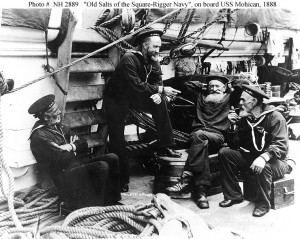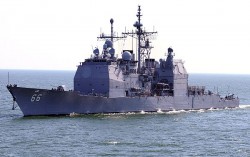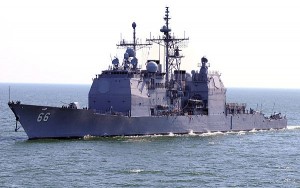When we think of navies, we think of tradition.

The peculiar lexicon of Sailors (scuttlebutt, trice up, and wildcat come to mind), the boatswain’s pipe and lanyard, and the Beaux Arts architecture at the US Naval Academy in Annapolis are all audible or tangible indicators of the Navy’s reliance on tradition. As a result, innovation often seems antithetical to naval culture. An account from Geoffrey Till’s chapter in this book illustrates the Royal Navy’s resistance to the Aircraft Carrier:
No greater modification of any [of Her Majesty’s] ships that I proposed would have had the smallest chance of acceptance at that time. Prior to the First World War, the navy had no war experience for a very long time; and a long peace breeds conservatism and hostility to change in senior officers. Consequently, revolutionary ideas which were readily accepted when war came, were unthinkable in the peacetime atmosphere of 1912. Circumscribed by the then existing limitations my proposal was the furthest one could hope to go. – Lieutenant Hugh Williamson, RN (Page 192)
Fiscal austerity is forcing naval leaders to think about innovation: how do we use scarce means to provide the strategic ends we need? Over at Small Wars, the USNI Blog, and others, the term “disruptive thinker” has surged to the forefront of military professional discourse. At issue: do our military institutions produce and value disruptive thinkers and disruptive thoughts to foster innovation? The US Navy, however, beat everyone to the punch with little fanfare. Back in February, it quietly instituted a program to solicit disruptive ideas for development and potential adoption. In a US Fleet forces Command message (DTG 290708Z FEB 12), the Navy announced a new concept development program run jointly between Fleet Forces and the Naval Warfare Development Command. The message goes on to say:
VALUABLE IDEAS CAN COME FROM ANYWHERE, AND THE NAVY CONCEPT GENERATION AND CONCEPT DEVELOPMENT PROGRAM...WAS ESTABLISHED TO PROVIDE A COLLABORATIVE APPROACH FOR HARVESTING NEW IDEAS AND DEVELOPING THEM INTO CAPABILITIES FOR THE FLEET.
In January, I published an article in Proceedings jointly authored with a Chief from my previous command. He received the Fleet Forces message and phoned me immediately to push our idea through this program. I was initially skeptical: would our idea disappear into an invisible morass of bureaucracy? Would we ever receive feedback? Is this just a relief valve for unorthodox concepts?
Today, I can say firsthand that this new concept generation and development program is one of the most open and transparent processes I’ve ever seen. Action officers at the O-5/O-6 level worked with me to submit a concept proposal and have kept me regularly updated regarding its potential adoption. Senior officers and civilians at Fleet Forces (many of whom finished careers in the Navy and Marine Corps) are hungry for new ways of fighting, or of manning, training, and equipping the fighters. Junior officers and enlisted Sailors are a focus of this initiative.
For those disruptive thinkers out there, the Navy is waiting to hear from you. Cultures change – even ones that value tradition as much as the Navy. That’s because no one cultural narrative ever fits perfectly: the US Navy places great value not just on tradition, but also on independence and decentralization. We already crowdsource warfare. This model equally applies to peacetime innovation.
For more information, see the governing instruction. Those with appropriate access can go to HTTP://FIMS.NWDC.NAVY.SMIL.MIL/PORTALS/CONCEPTS/DEFAULT.ASPX to submit proposals. Also, the Naval Warfare Development command is holding a Junior Leader Innovation Symposium in Norfolk on 6 June. Registrants can attend either in person or virtually.
The opinions and views expressed in this post are those of the author alone and are presented in his personal capacity. They do not necessarily represent the views of U.S. Department of Defense, the U.S. Navy, or any other agency.






